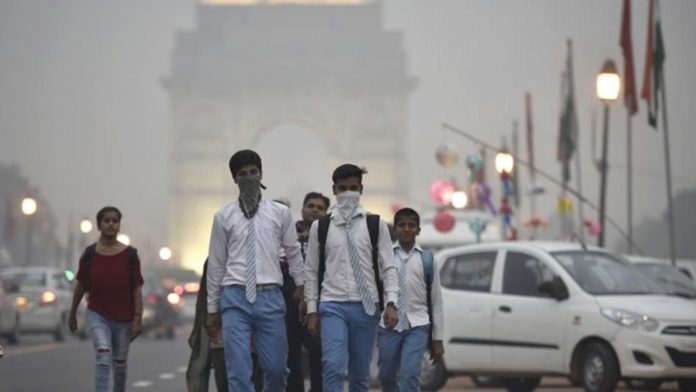There is a growing concern over the escalation of respiratory diseases, particularly Influenza A (H1N1), in India. The most recent data from the National Centre for Disease Control (NCDC) suggests a resurgence of Influenza A (H1N1) cases in Kerala, Maharashtra, Punjab, Tamil Nadu, Telangana, Chattisgarh, Sikkim, Uttarakhand and West Bengal, with a few states also reporting deaths related to influenza. An NCDC report highlighted the presence of A(H1N1) pdm09, A(H3N2), and Type B Victoria lineage strains in India.These flu viruses in India are similar to the ones found worldwide and are of the same type that the World Health Organization (WHO) recommends vaccines for, specifically the Southern Hemisphere 2024. Clinicians have advised people with cough and cold symptoms to get tested for both flu and Covid-19, as there has been an increase in chest infections and hospital admissions. In response to a rise in influenza infections in the country, the NCDC has recommended the prudent use of the Southern Hemisphere’s 2024 quadrivalent influenza vaccine.Seasonal influenza (the flu) is an acute respiratory infection caused by influenza viruses. It is highly contagious, affects the respiratory system, including the nose, throat and lungs, and is common in all parts of the world. Seasonal influenza is characterised by a sudden onset of fever, cough (usually dry), headache, muscle and joint pain, severe malaise (feeling unwell), sore throat and a runny nose.
The cough can be severe and can last two or more weeks. Most people recover from fever and other symptoms within a week without requiring medical attention. But influenza can cause severe illness or deaths, especially in people at high risk. In industrialised countries, most deaths associated with influenza occur among people aged 65 years or older. The effects of seasonal influenza epidemics in developing countries are not fully known, but research estimates that 99 per cent of deaths in children under five years of age with influenza-related lower respiratory tract infections are found in developing countries. Epidemics can result in high levels of worker/school absenteeism and productivity losses. Clinics and hospitals can be overwhelmed during peak illness periods.
Influenza viruses are constantly evolving. In India, the most prevalent subtypes are influenza A (H1N1), (H3N2), and influenza B viruses. Every year, there are outbreaks of influenza in India, particularly during winter. Factors like high population density, poor hygiene practices, weather conducive to the survival and spread of the virus and low vaccination rates increase the risk of flu transmission.Extensive epidemiological studies have explored the relationship between seasonal epidemics of respiratory viruses and meteorological factors. Climate change has direct or indirect effects on the occurrence and transmission of viral respiratory infections, including influenza. Due to climate change, seasonal epidemics of influenza may shift spatially and temporally, with rising temperatures and abnormal rainfall patterns being contributing factors. Extreme weather events have the potential to exacerbate risks of influenza and transmission of other respiratory viruses.
Most cases of human influenza are clinically diagnosed. However, during periods of low influenza activity or outside of epidemic situations, the infection of other respiratory viruses (e.g. SARS-CoV-2, rhinovirus, respiratory syncytial virus, parainfluenza and adenovirus) can also present as influenza-like illness (ILI), which makes the clinical differentiation of influenza from other pathogens difficult.
In absence of definitive diagnosis and symptoms coinciding with acute respiratory infections, indiscriminate antimicrobial use happens. Acute respiratory infections are the leading cause of outpatient antibiotic prescription, with over 80 per cent receiving antibiotics unnecessarily in Low- or Middle-Income Countries (LMIC), including influenza patients who may not particularly benefit from such treatment. India is already seeing increasing levels of antimicrobial resistance (AMR), according to data published by ICMR and NCDC annually.
The latest report by NCDC also provides substantial evidence of excessive prescription of antimicrobials from the “Watch” category of WHO’s AWaRe classification. It is, therefore, necessary to implement interventions that can lead to reduction in opportunities for antimicrobial prescriptions. Flu vaccine shots for the elderly is part of influenza control measures implemented in more than 100 countries, including some LMICs like Mexico, Tajikistan, Vietnam, Malaysia, Thailand, Oman, Philippines and Sri Lanka.
This has led to decreased risk of hospitalisation and deaths in elderly population as well as reduction in antimicrobial usage. About a dozen flu vaccines have been approved for use in India, too. The Ministry of Health and Family Welfare (MoHFW) recommends annual influenza vaccination for high risk groups, specifically healthcare workers, pregnant women, and people with chronic health conditions. For children below five years and adults over 65 years, the seasonal influenza vaccine has been categorised as “desirable” or lower priority. While MoHFW recommends these vaccines, they do not routinely purchase or provide them for these age groups.
The immunisation programmes in all LMICs are maturing at a rapid speed. Implementation of Covid-19 vaccine programme was the beginning of an adult immunisation programme in India which must be leveraged for making other adult vaccines available in the country. The discussion on the introduction of influenza vaccine into the government’s Universal Immunisation Programme is limited by the lack of data on morbidity and mortality caused by influenza in India. For the same reason, strategies for influenza prevention and control have not been prioritised by health societies such as the Indian Medical Association or Indian Academy of Pediatrics. As the country embarks towards universal health coverage and in the wake of recent influenza outbreaks, it is an opportune time for the government to adopt a more preventive approach. The expansion of the immunisation programme to include influenza vaccines needs to be considered as this will not only benefit those vaccinated, it will also reduce community transmission, unnecessary antimicrobial prescriptions and superimposed bacterial infections that can complicate influenza and require antibiotics. This will help augment AMR containment efforts in the country and be both pragmatic and in line with the ongoing pandemic-preparedness efforts.
The writer is senior scientist and programme officer, AMR, Indian Council of Medical Research
source:https://indianexpress.com/article/opinion/columns/why-are-indians-falling-ill-so-frequently-9171543/





